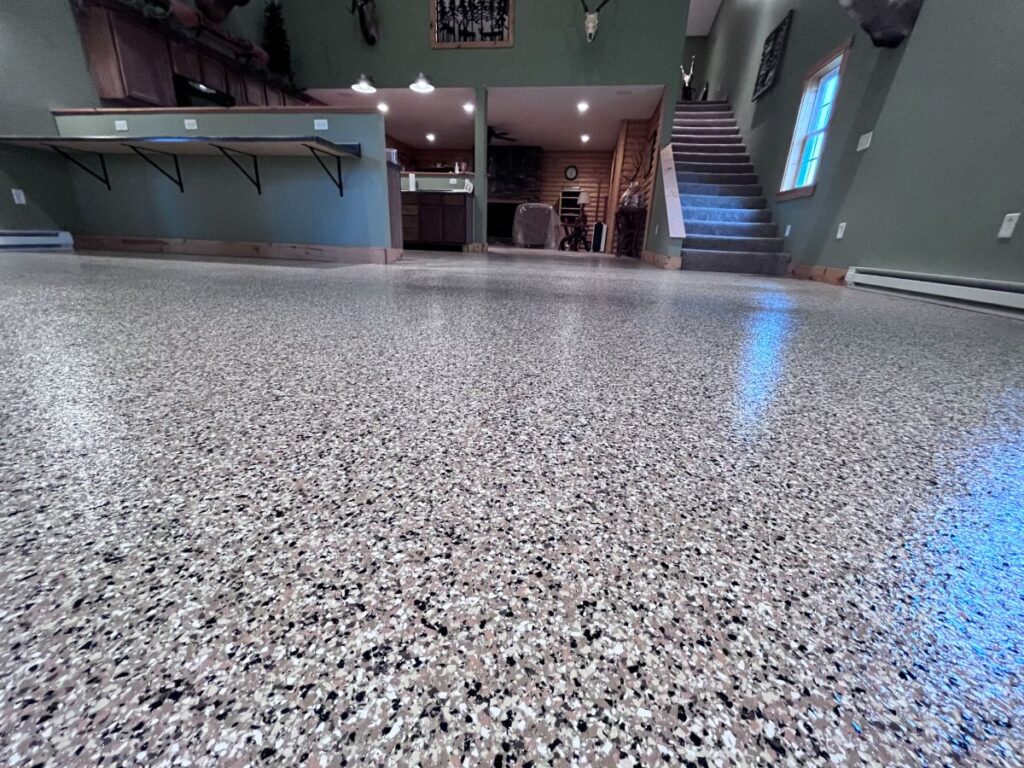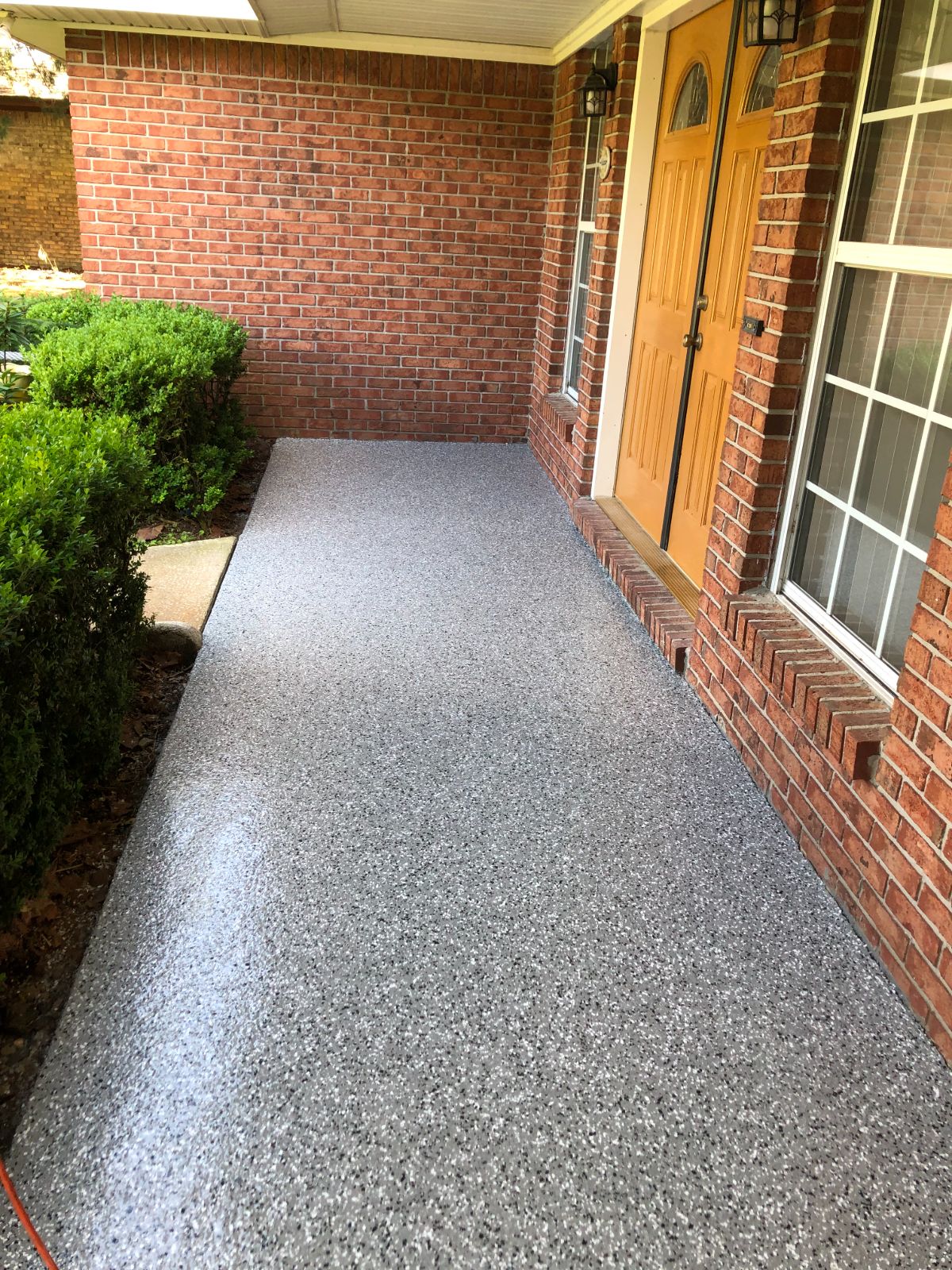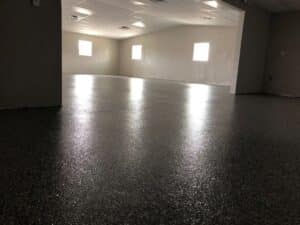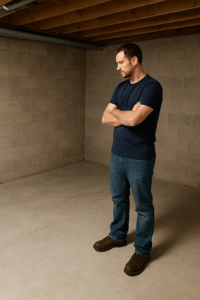Quick Takeaways
- Not all concrete coatings are created equal – epoxy and polyaspartic floor coatings each have strengths, but the right choice depends on your project.
- Polyurea/polyaspartic systems offer faster curing, UV resistance, and greater flexibility, especially in climates with wide temperature changes.
- Epoxy coatings may be more affordable up front but come with downsides like UV yellowing, longer cure times, and less flexibility, which can lead to cracks and costly repairs.
Why Your Floor Coating Choice Could Make or Break Your Project
When it comes to protecting and upgrading a concrete floor, the type of coating you choose can have a huge impact.
Whether you’re redoing a garage, a basement, or a commercial space, choosing between epoxy and poly (that’s polyurea + polyaspartic) isn’t just a matter of preference – it’s about performance, longevity, and getting the best return on your investment.
At Dream Floors Concrete Coatings, based in Fort Plain, NY, we specialize in high-performance concrete coatings for homes and businesses throughout the Albany, Schenectady, and Cooperstown area – and this comparison of epoxy versus poly is one we walk our customers through every single day.
What Is Epoxy Resin?
Epoxy resin is a popular and widely used coating material known for its strength, adhesion, and versatility. It forms a hard, thick barrier on the concrete surface and is often used in garage floors, industrial settings, and commercial spaces.
That said, epoxy coatings take several days to cure and are susceptible to UV exposure, which can lead to yellowing. They’re also more rigid, which means they don’t move well with temperature changes – a big factor if your space isn’t climate controlled, as with garage floor coatings. Compared to other coatings like acrylic coatings or polyester resin, epoxy offers better bonding but less flexibility.
What Is Poly? (Polyurea + Polyaspartic)
In the flooring industry, when we say “poly,” we’re talking about a combination of polyurea base coat and polyaspartic top coat. This coating system cures lightning fast, resists scratches and hot tire pickup (where the coating comes off right where car tires sit), and holds up to chemicals and sunlight.
At Dream Floors Concrete Coatings, we use Duralast coatings for their durability, fast curing, and excellent UV stability. These coatings offer phenomenal performance and install in as little as one day.

The Installation Processes, Compared
Every good floor starts with surface preparation – that means diamond grinding and smoothing out the bare concrete.
With epoxy, you’re looking at multiple coats and several days of drying. Polyurea/polyaspartic systems cure within hours – not days – which means your garage or business can be back in action fast.
| Is “Poly” the Same as Polyurethane? |
|---|
Short answer: Nope – but it’s a common mix-up. When you hear professionals talk about “poly coatings” for concrete, they’re almost always referring to a polyurea basecoat paired with a polyaspartic topcoat. This combo creates a super tough, UV-stable, fast-curing system ideal for garages, basements, and commercial spaces. Polyurethane, on the other hand, is a different type of material altogether: – It’s more commonly used as a topcoat on hardwood floors or sometimes over epoxy in industrial settings. – It’s somewhat flexible and has decent UV resistance, but not as durable or fast-curing as polyaspartic. – It’s also slower to cure and more sensitive to moisture during installation. So while polyurethane is a “poly,” it’s not the kind we’re talking about when comparing high-performance concrete coatings. |
Durability and Performance in High Traffic Areas, Compared
If your flooring project sees a lot of foot traffic, cars, dropped tools, or spilled chemicals, durability matters. Polyaspartic coatings shine here with exceptional abrasion resistance, chemical resistance, and the flexibility to move with the concrete underneath.
Epoxy may eventually crack or peel under these same conditions, especially in climates like ours where temperature changes are dramatic.
UV Stability, Gloss, and Appearance, Compared
Let’s be honest – you want your floor to look amazing, not chalky or yellow after a year in the sun. Epoxy tends to fade and yellow with UV exposure.
Polyaspartic floor coatings, on the other hand, maintain their high gloss and color long-term. Add in decorative flakes for extra flair and slip resistance, and you’ve got a floor that looks as sharp as it performs.
Cost and Long-Term Value, Compared
Epoxy wins on cost upfront – it’s cheaper to buy and install. But once you factor in the potential for costly repairs, general wear, and shorter life expectancy, poly starts looking like a smarter investment.
With fewer callbacks, better performance, and longer lifespan, polyaspartic coatings are often the best concrete coating choice over the long haul.
Where Each Coating System Works Best!
Epoxy coatings might be fine for indoor spaces with low light and limited moisture and as a DIYer – think basements or interior retail flooring. But for garage floors, patios, and workshops, professional polyurea/polyaspartic systems are the hands-down winner.
That’s why nearly every project we take on at Dream Floors Concrete Coatings is polyaspartic.
Maintenance and Wear Over Time, Compared
Both coating types are easy to clean, but poly makes it even easier. Just a mop and some mild soap will do. Thanks to its wear resistance, poly won’t chip or flake like old epoxy systems often do.
Less downtime, fewer repairs, and no worrying about hot tires peeling up your floor.
Environmental & Health Considerations
Modern polyaspartic coatings and epoxy coatings are safer than they used to be, but poly systems tend to be more environmentally friendly overall. That’s especially important for indoor applications like basements or existing concrete areas with limited ventilation.
FAQs: Common Questions About Epoxy vs Poly Coatings
- What’s the disadvantage of an epoxy coating? Long cure times, poor UV performance, and brittleness.
- What are the disadvantages of a polyaspartic coating? Slightly higher cost and tricky to DIY.
- Why put polyurethane over epoxy? Sometimes used as a topcoat, but polyaspartic is better.
- What’s the cheapest way to finish concrete? Paint or sealers – but they don’t last.
So, Epoxy or Poly – Which Coating Truly Has the Edge?
For most concrete surfaces, especially garage floors, patios, and high-use areas, polyaspartic coatings paired with polyurea base coats offer unmatched performance. At Dream Floors Concrete Coatings, we trust this system because we’ve seen it outperform epoxy again and again – fewer problems, happier customers, better results.
If you’re thinking about your next floor coating project, we’d love to help you get it right. Reach out for a free quote, and let’s make your floor the best it can be.





